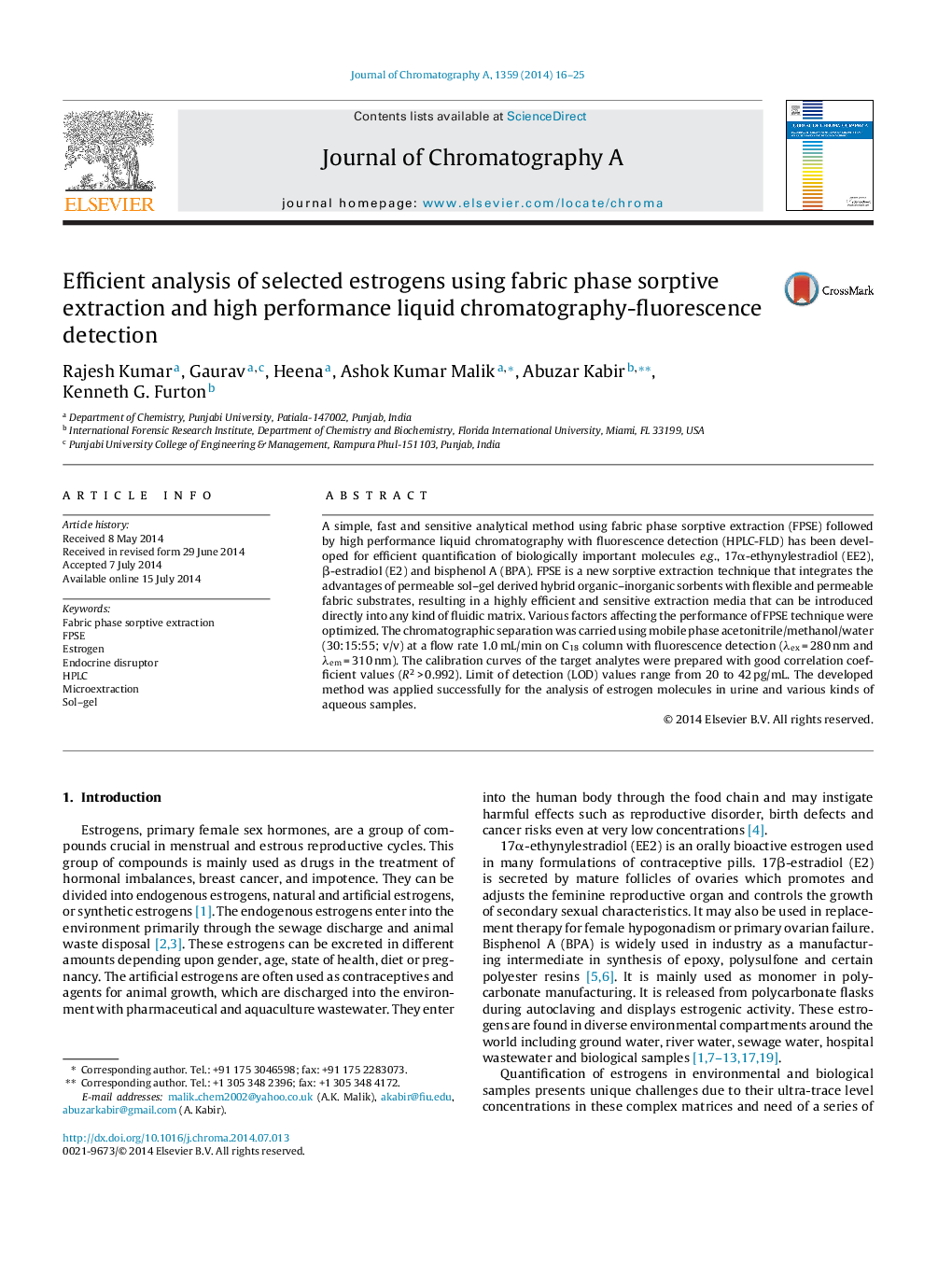| Article ID | Journal | Published Year | Pages | File Type |
|---|---|---|---|---|
| 1199378 | Journal of Chromatography A | 2014 | 10 Pages |
•A new sample preparation approach “Fabric Phase Sorptive Extraction” is proposed.•Selectivity of sol–gel precursor, organic polymer, and substrate are combined.•FPSE medium can be inserted directly into the unmodified aqueous/biological sample.•Strong chemical bonding between substrate and sorbent offers unique robustness.•Parameters impacting fabric phase sorptive extraction performance were optimized.
A simple, fast and sensitive analytical method using fabric phase sorptive extraction (FPSE) followed by high performance liquid chromatography with fluorescence detection (HPLC-FLD) has been developed for efficient quantification of biologically important molecules e.g., 17α-ethynylestradiol (EE2), β-estradiol (E2) and bisphenol A (BPA). FPSE is a new sorptive extraction technique that integrates the advantages of permeable sol–gel derived hybrid organic–inorganic sorbents with flexible and permeable fabric substrates, resulting in a highly efficient and sensitive extraction media that can be introduced directly into any kind of fluidic matrix. Various factors affecting the performance of FPSE technique were optimized. The chromatographic separation was carried using mobile phase acetonitrile/methanol/water (30:15:55; v/v) at a flow rate 1.0 mL/min on C18 column with fluorescence detection (λex = 280 nm and λem = 310 nm). The calibration curves of the target analytes were prepared with good correlation coefficient values (R2 > 0.992). Limit of detection (LOD) values range from 20 to 42 pg/mL. The developed method was applied successfully for the analysis of estrogen molecules in urine and various kinds of aqueous samples.
